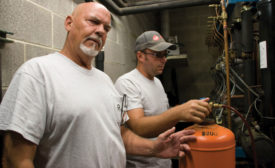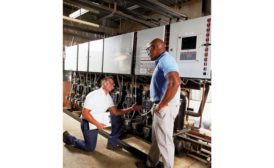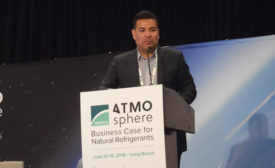Joanna R. Turpin
Joanna Turpin is a Senior Editor at The ACHR NEWS. She can be contacted at 248-786-1707 or joannaturpin@achrnews.com. Joanna has been with BNP Media since 1991, first heading up the company’s technical book division before moving over to The ACHR NEWS, where she frequently writes about refrigerants and commercial refrigeration. She obtained her bachelor’s degree in English from the University of Washington and worked on her master’s degree in technical communication at Eastern Michigan University.
ARTICLES
Transitioning to Alternative, Lower Global Warming Potential Refrigerants
Contractors can help supermarket and store owners find the right solution
Read More
Supermarkets in the Market for New, Advanced IoT Solutions
New options can improve refrigeration performance and reduce downtime
Read More
New Refrigeration Equipment Designed to Keep Its Cool
Innovative solutions offer benefits to end users and contractors
Read More
Does Peak HVAC Pricing Result in Piqued Customers?
Experts debate raising prices during busy times
Read More
The Case of Natural Refrigerants Versus the ‘Super Pollutants’
Conference highlights options available for commercial refrigeration
Read More
Copyright ©2024. All Rights Reserved BNP Media.
Design, CMS, Hosting & Web Development :: ePublishing







